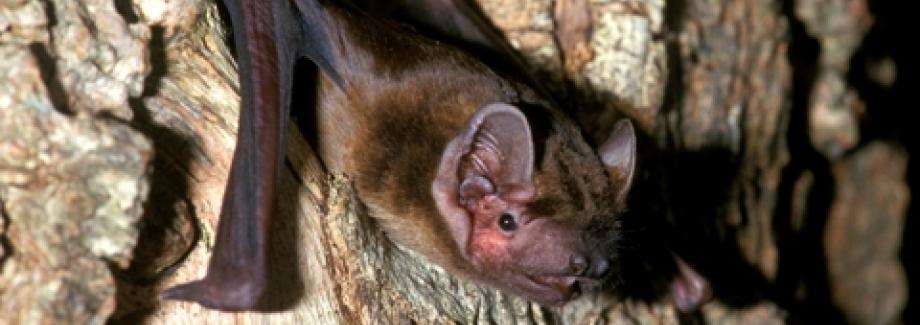BatLife Europe launches the Noctule Count
BatLife Europe launches the Noctule Count
We welcome you to join in with our Europe-wide Noctule Count this summer. Please view the details below and get involved to help monitor Noctule bats across Europe and make our project a success!
The Noctule counting period has ended for 2023 but we're keen to hear from those who counted. Please help us shape the future of the project by sending any feedback or suggestions to batlife-europe@bats.org.uk.
Our vision for the project
Our vision for the project
We aim to initialize an easy-accessible monitoring system that can be implemented by interested persons, citizen-scientists and bat workers, to obtain activity data of the common noctule from all over Europe to monitor population trends of this species.
The Common noctule (Nyctalus noctula), a species widely distributed across Europe, is the most affected bat species by wind turbines. As an early-flying bat, however, it is easy to observe. The idea is to draw long-term conclusions about population changes, using many observations of the maximum number of common noctules flying simultaneously at one location at dusk. This data will also improve our knowledge of the species' distribution. For a migratory species, this can only be achieved with a large-scale approach with many observers.
Download the App
Download the App
For the coordinate-referenced (GPS) recording of the counting results, and transmission to a map server on the internet, we provide an app for smartphones. The Epicollect app can be used to upload the coordinates of the observation site and the counting results directly to the project homepage. The reports of all participants can also be viewed on the app.
You can install the Epicollect app via Google Play Store or iOS App Store. Once installed, you can add the project “BLE Noctule Count”.
Noctule Counting tips
Noctule Counting tips
When to Count:
In the first period, counting should take place on two evenings at one spot between Aug. 20th and Sept. 15th 2023. If possible a gap of 5 days in between would be nice.
Where to Count:
The best sites are places where forests and waterbodies merge:
- at rivers and small streams
- at small ponds and lakes
- often in parks
If local or regional groups are counting it would be best to monitor sites in fixed distances
How to Count:
Look for a place with a free view over the sky and observe the evening sky for 30 minutes. Write down the maximum number of common noctules seen flying simultaneously in this period. Best practice would be to directly enter the data in the BLE’s monitoring-app. A bat detector and binoculars might be helpful.
How to recognise a common noctule:
In the early parts of evenings there might be also birds flying around. Common noctules are nonetheless quite easy to recognise:
- The flight mechanism seems a bit ”heavy“ as the wings make wide movements.
- The bat’s body looks chubbier and bats have no tails.
- Bats often make abrupt “sudden” movements, when they detect insects and do not make smooth gliding flight paths.
Noctule Count Webinar
Noctule Count Webinar
BatLife Europe's trustee Markus Melber gave a Webinar early in August, giving an overview of the project and explaining how to take part.

